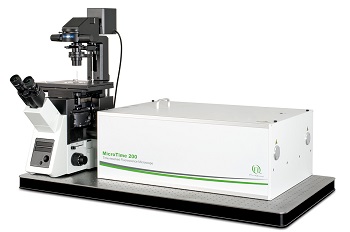PicoQuant GmbH, specialist in the field of single photon counting applications, will release a super-resolution upgrade to its confocal microscopy system MicroTime 200. The STED (stimulated emission depletion) upgrade will be presented to the public for the first time during a product demonstration at PicoQuant's 20th International Workshop on “Single Molecule Spectroscopy and Ultra Sensitive Analysis in the Life Sciences”. The workshop takes place on September 2-5, 2014 in Berlin, Germany.

The MicroTime 200 is a powerful and versatile FLIM and FCS platform that enables the user to perform a wide range of measurements down to the single molecule level. In addition to the excellent timing resolution of the MicroTime 200, the new STED upgrade will offer spatial resolution several times lower than the diffraction limit. Apart from imaging, where the increased resolution allows the distinction of smaller structures, STED can be used in spectroscopy, which promises more accurate and versatile 2D FCS measurements. “The outstanding timing accuracy of PicoQuant's products is a perfect match for STED super-resolution,” says Rainer Erdmann, Managing Director of PicoQuant GmbH. “Our customers will greatly benefit from this exciting add-on.”
STED microscopy reaches spatial resolutions well below 100 nm by de-exciting fluorophores in the outer region of the excitation focus. This is achieved by shaping the de-exciting (STED) laser into a donut shape with the excitation laser in the center. The shape and intensity of the STED laser define the resolution of the microscope.
Externally triggered lasers and confocal detection with time-correlated single photon counting (TCSPC) allow for various excitation schemes and detection modalities. This inherent flexibility makes it easy to modify experiments to address highly specific biological questions. As an open platform, the MicroTime 200 can also be combined with several other devices, such as an atomic force microscope (AFM), a spectrometer, or a cryo-chamber.